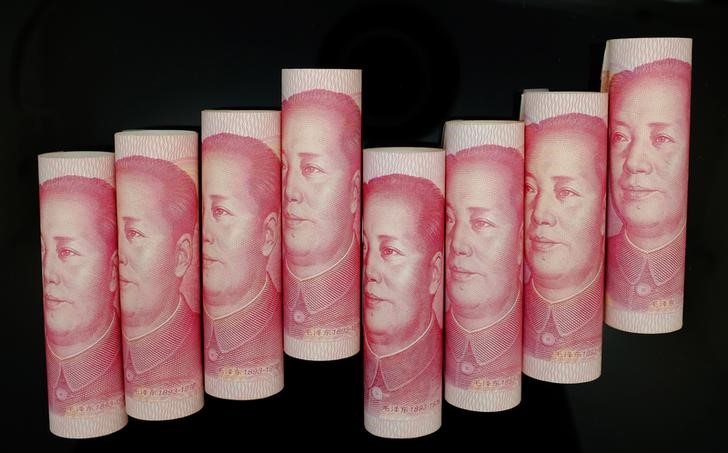By Koh Gui Qing and Kevin Yao
BEIJING (Reuters) - China's growth in broad money supply slumped to its lowest on record in January even as new yuan loans hit a 5-1/2-year high, boosting bets that Beijing may further loosen monetary policy to avert a sharper economic slowdown.
The broad M2 money supply measure in January rose just 10.8 percent from a year earlier, central bank data showed on Friday, the weakest pace since records started in 1998 and well under a 12.1 percent forecast.
That was even as new yuan loans surged to 1.47 trillion yuan (153 billion pound), trumping market expectations for 1.35 trillion yuan, and more than doubling December's 697.3 billion yuan.
"The slower M2 growth could be largely attributed to the capital outflows as Chinese corporates are unwinding the U.S. dollar liabilities," ANZ economists said in a note to clients.
"In order to maintain a reasonable money supply, we see that China's central bank will continue to inject liquidity. We see that further monetary policy easing could be imminent," ANZ said.
ANZ predicted the central bank could reduce the ratio of cash that banks must set aside as reserves by another 100 basis points, and lower deposit rates by another 50 basis points.
Bank lending and changes in money supply are crucial parts of China's monetary policy. The government tells commercial banks how much to lend and when to lend each year.
To lift China's flagging economy, where growth hit a 24-year low of 7.4 percent last year, the People's Bank of China cut banks' reserve requirements last week for the first time in more than two years.
That followed a surprise cut to benchmark interest rates in November, also the first such move in more than two years, to lower borrowing costs and support growth.
LONGER-TERM LOANS
Bank lending usually spikes in China in January as banks, which face limits on how much they can lend each year, squeeze as much lending as possible into the first month to protect their market share.
The central bank said on Friday that total social financing, a broader measure of overall liquidity in the economy, also jumped 21 percent from December to 2.05 trillion yuan.
Outstanding loans denominated in yuan rose 13.9 percent in January from a year earlier, compared with estimates for a 13.4 percent increase.
To be sure, some analysts were encouraged by Friday's data, which showed mid- to long-term loans accounting for most of January's lending surge, suggesting that cash had flowed into the real economy and not speculative activity.
"Medium- and long-term loans were also high, matching a lot of the infrastructure projects the government had approved since November," said Yan Ling, an economist at China Merchant Securities.
But other analysts warned that the strong lending data belied the fact that banks remained reluctant to lend to certain sectors, such as the farm sector, as rising bad loans make lenders increasingly risk-averse.
"M2 growth has been slowing since the second-half of last year...(that is) probably related to falling foreign exchange purchases," said Nie Wen, an economist at Hwabao Trust in Shanghai.
"If they want to keep M2 growth at 12-13 percent this year, the central bank still needs to cut RRR further. The central bank should also cut interest rates."
Other data this week suggested a further loss of economic momentum at the start of 2015 and growing risks to the financial system.
January imports slumped nearly 20 percent while consumer inflation hit a five-year low. Meanwhile, credit card arrears leapt 42 percent last year to 35.8 billion yuan ($6.2 billion).
However, analysts cautioned about reading too much into economic indicators for January alone, given the strong seasonal distortions caused by the timing of the Lunar New Year holidays, which began on Jan. 31 last year but start on Feb. 19 this year.
